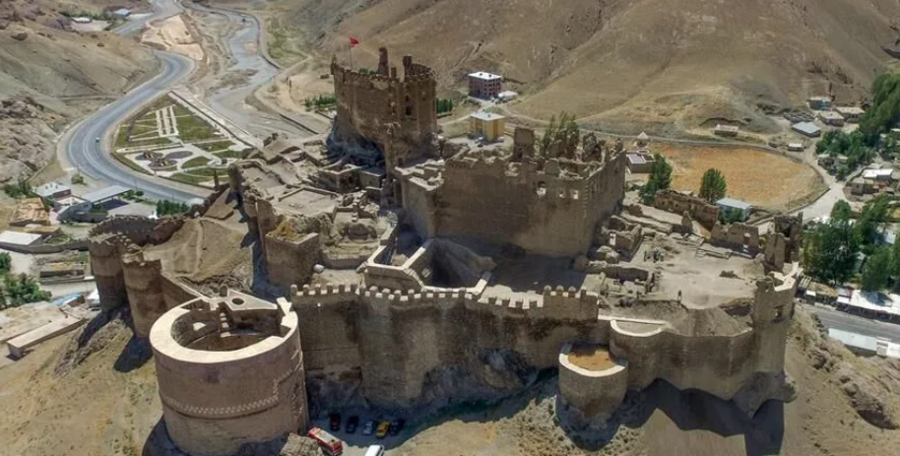Kurdshop - Khoshab Castle is located on the road between Van and Jolamerg in North Kurdistan and is located in the village of Khoshab in the district of Payzawa, 60 kilometers from the center of Van province. The castle is built on a sharp hill and consists of two parts.

Khoshab Castle dates back to the Urartu period and consists of two parts: inner and outer, with the outer part located to the north of the inner fortress. After the Urartu, Khoshab Castle was restored by the Kurdish ruler Mir Suleiman Zeri Mamidi, (Zer Bag), in 1643 when the area was under Ottoman rule.

Khoshab Castle is located 60 kilometers from the center of Van. It is also 40 kilometers from the district center of Paizawa. It is situated on the northwest part of the Khoshab river and is built on a steep sharp rock ridge. The meaning of name Khoshab comes from the name of the river and pleasant water. Khoshab comes from Khosh Ab (pleasant water). The outer wall of the castle is built according to the surrounding land and is surrounded by walls on the east, north, and west. But now parts of the east and west walls are in ruins. Some of its constellations remain to this day. The east and west gates have been completely damaged and destroyed. There is also a watchtower to the northeast of the outer fortress. The remains of a mosque and village houses still remain inside the castle.

The inner fortress is high on the south side and is built on an arched foundation to the north. The walls of the castle have towers on the north, east, and west and they are strengthened in this way. On the north side is an entrance to the castle and a tower, through which you can enter the castle.

The top of the door is made like a crown and on the west side, there is a battalion, a window, and a lion carving. In addition, the iron gate built at that time remains authentic and functions as it did today. Inside the castle, the palaces built at that time remained. The palaces were built to the south of the castle. At the top and in the eastern part is a palace and to the west of that is a harem. The mosque, prison, oven, and refrigerator are also other buildings of the castle.

Abandoned in the middle of the 19th century, the castle survives today with its current buildings and is therefore one of the most important landmarks in the region.









